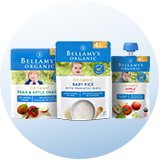How to Grow a Veggie Patch With Your Kids
Gardening is a fantastic activity that kids of every age can enjoy. Children can learn new skills, have fun, play, and develop self-confidence by digging in the soil, getting dirty, tending to plants and watching them grow. Gardening teaches children:
- Responsibility by highlighting the importance of nurture
- Understanding cause and effect (water and plants grow, ignore and plants die)
- Self-confidence and a sense of achievement that stems from growing their own garden
- To love nature and the feeling of being outdoors
- Nutrition
- Cooperation and teamwork.
Children will feel a great sense of joy tasting something they have grown themselves. With this in mind, growing a vegetable garden with your child(ren) is one of the best activities you can do together.
Growing a veggie garden
Kids love planting seeds, watching them sprout, and eventually harvesting what they have grown. But more than that, they will love the opportunity to spend more time with you, and the responsibility that growing your own garden gives them. To make a successful veggie garden, you should start by choosing appropriate plants. Choose easy-to-grow vegetables such as beets, carrots, radishes and tomatoes, but also include foods that kids love to snack on, such as cherry tomatoes, strawberries, beans and peas. You might also consider adding interest and colour by introducing flowers and herbs such as marigolds, nasturtiums, mint, dill and sunflowers, or texturous plants such as lamb’s ear or cotton.
Designing your garden
It’s important to involve your child in every process of the vegetable garden, and that includes the design. Decide together where you will place your garden, and what you are going to grow in it. If your child needs help making this decision, consider taking them on a trip to your local farmer’s market to try some produce or to a nursery to see what plants look like. Encourage your child to be creative with the garden design and to make it unique to them. Gardens don’t have to be presented in a rectangular plot, so consider letting your child choose some interesting pots they could perhaps decorate themselves. Nearly anything that holds soil and has good drainage can be used, and gardens can be placed anywhere that gets plenty of sunlight and an ample supply of water. You might also like to add unique features such as a water fountain, windmill, chime, or trellis, and will need to allow space for storing garden tools such as child-size rakes, hoes, spades and gloves. Thing to consider are:
Location
Choose a sunny spot not too far from your home. Having your garden in the centre of your outdoor activities will make keeping an eye on weeds, insect pests, watering needs and ripe vegetables easier, and will keep the garden at the forefront of your child’s mind. Kids tend to work out the ‘out of sight out of mind’ principle, so avoid planting your veggies at the bottom of the garden. Your garden will also need to be in close proximity to a water source for easy watering.
Layout
Kids only have little arms, so keep beds narrow to allow your child to reach the middle of the bed from both sides. Alternatively, space garden beds far enough apart to allow your child to walk between them. You can test out the layout of your veggie garden by laying down a garden hose or by sprinkling the ground in flour in the shape of the bed you are imagining.
Raised beds
A traditional outdoor garden is planted in the ground, but unless the area has been cultivated before you will need a tiller to break the compacted soil before you begin planting. Otherwise, you might consider a raised bed, which offers many benefits. Raised beds allow you to control the soil quality and keep plants protected from little trampling feet. Since raised beds tend to warm up sooner in the spring, you’ll also find you have a longer growing season. Best of all though, raised beds reduce weeds and lawn grass invasion.
Planting guidelines
Ideally, you want your child to enjoy their veggie patch all year round and not just in the spring, so check growing recommendations and planting calendars. If you’re unsure of what to plant for all-year growing, contact your local nursery.
Keep it fun
Sites such as Vegetable Gardening Online not only offer some great plans to help kick off your vegetable garden, they also offer fun activities that keep kids interested in their journey to becoming a gardener, such as colouring sheets, art activities and printable plant guides.
Top 5 plants to get you started
1. Peas
Peas can be started inside using homemade recycled newspaper pots, organic compost and seeds - making for a great spring afternoon activity. As the seeds are poisonous though, be sure to keep them out of your child’s mouth and wash hands thoroughly at the end of the activity. Once transferred to a trellis, peas will grow all summer long and offer pretty white flowers the kids will love to pick.
2. Sunflowers
Sunflowers are heaps of fun to cultivate, growing up to 15 feet tall. As long as your veggie garden gets full sunlight, sunflowers are easy to grow, look spectacular and offer a great visual for kids learning about growth.
3. Strawberries
Harvesting strawberries is like a little treasure hunt for kids, and your child will love to peek underneath the leaves each day. Homegrown strawberries are deliciously sweet and make great additions to desserts and salads. Alternatively, just snack as you pick!
4. Cabbage
Cabbages can grow really big in just a short amount of time, making them lots of fun for kids to grow. Once picked, their soft leaves are easy to chop for even the littlest hands and they’re delicious as part of a coleslaw, soup, wrap or stew.
5. Mint
Mint is the perfect plant for a beginner gardener, growing easily be it in the ground or in a pot. Mint produces quickly in ideal conditions, can be picked all year round, and most kids love to pick off the leaves and have a nibble as they’re checking their other veggies.
































